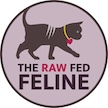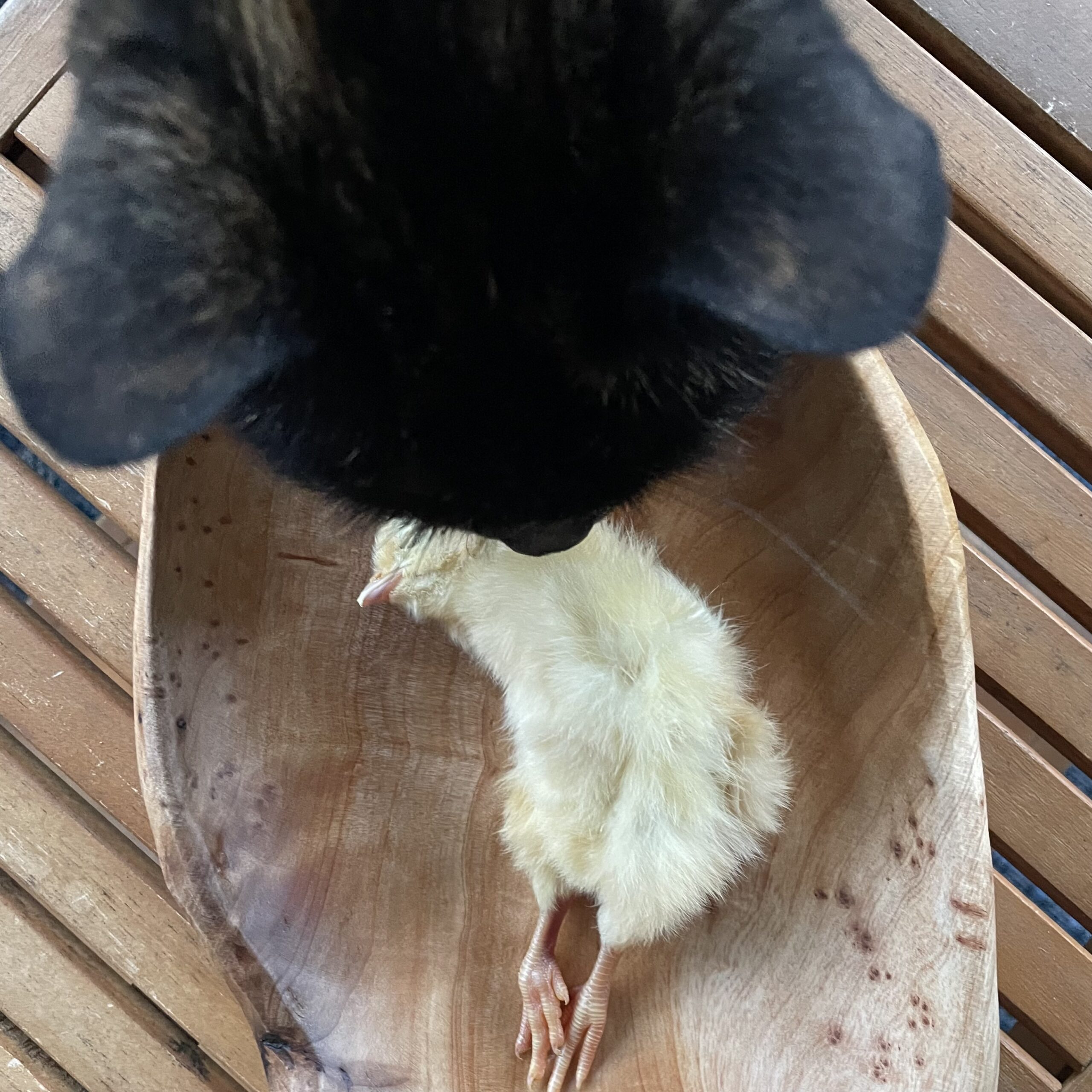I want to share how my thinking has changed as I have looked more closely at whole prey nutrition and how cats naturally eat. I’ve shifted how I think about the ratios used for making prey model raw food and the importance of fiber and blood in the diet.
Prey Model Raw Ratios
When it comes to PMR ratios, I think it’s important to hold in mind that cats don’t naturally eat an exact diet. So there’s no need to get stuck on exact numbers. (Check out this post to see how wide a range of nutrient values cats’ food naturally has.)
One of the most common ratios that cat raw feeders use is 84% meat, 6% bone, and 10% organs. This is my previous post about feeding PMR using 84/6/10 as the base ratio. I have also seen 83% meat, 7% bone, and 10% organs, and 82% meat, 8% bone, and 10% organs. Many cats eat commercial raw foods that have a ratio of 80% meat, 10% bone, and 10% organs. This suggests that cats can handle a range of ratios in their diet just as they handle a range of nutrients.
Composition of Whole Prey
Using whole prey as Mother Nature’s guideline for us, I looked at the average body composition ratios of mice, rats, and rabbits:
- 6.72% secreting organs (with 3.72% liver)
- 86.91% meat & muscular organs, including skin/fur/blood
- 6.37% bone
- =100%
Since this is based on whole prey, we need to take into account the skin and fur, which provide insoluble fiber. I estimate this at 2%. So the approximate ratios using this information would be 85% meat, 6% bone, 7% organs with 3-4% as liver, and 2% fiber.
Here again, I wouldn’t stress about these exact numbers. I would aim to feed within a range of cat appropriate ratios. Then monitor the litter box and your individual cat’s response.
Keep in mind that cats naturally eat a range of bone content from different animals. Most songbirds have around 4% bone, while rabbits have closer to 9-10%, and mice and rats have approximately 5%.
Some cats may respond better to bone fed at 5%, others made need closer to 10% to achieve well formed stool, and others may need something in between.
Fiber
I’ve also changed my thinking about fiber as I looked more closely at what and how cats eat. I didn’t used to consider fiber an important aspect of a raw diet. Honestly, I didn’t really think much about fiber at all when I first started raw feeding.
However, cats naturally consume fiber with every meal. The fur, feathers, cartilage, collagen, and tendons all act to some degree as insoluble fiber. These sources of fiber help keep the digestive system operating smoothly and support the gut microbiome.
animal based
Many raw diets do not include any fiber. If you feed whole raw meaty bones, tendons and cartilage provide some fiber. Incorporating some animal based fiber is a very nice addition to a raw diet.
Raw Feeding Miami is one online raw food supplier that offers some great animal based fiber options. They offer rabbit feet and ears, beef and lamb ears, and pieces of rabbit skin/fur called “rabbit chips,” all of which provide animal based fiber. Animal based fiber would be fed around 2% of the diet. Your cat may need a little less or a little more.
Including some whole prey in the diet is a fabulous way to provide fiber. Whole prey can be fed as a meal by itself or as a snack.
plant based
If you are unable to source animal based fiber, then you can experiment with some plant based fibers. This is some helpful information about plant based fibers. Only a very small amount of a plant based fiber is typically needed. The 2% ratio is only in reference to animal based fiber.

Blood
Another aspect of whole prey nutrition that I’ve recently considered with a different focus is blood. Just like fiber, cats naturally consume the blood of their prey with each meal. Blood is an important source of heme iron and other nutrients. Unfortunately, the meats that we use in raw feeding have been drained of blood.
Whole prey is an obvious awesome choice. If you are not including whole prey in the diet, freeze dried blood is another option.
Many raw feeders include spleen heavily in their cat’s rotation to provide heme iron, too.

Always learning
As you can see, my understanding about ratios, fiber, and blood has evolved over time. My thinking shifted as I took a closer look at whole prey nutrition and how cats naturally eat.
One of the things that I love about the field of nutrition is that there is still so much to discover. We understand so much less than we think we do. Best practice requires us to remain open to new information, which isn’t always easy. But the more we learn about feline nutrition, the better we can provide for our beloved cats’ needs.


